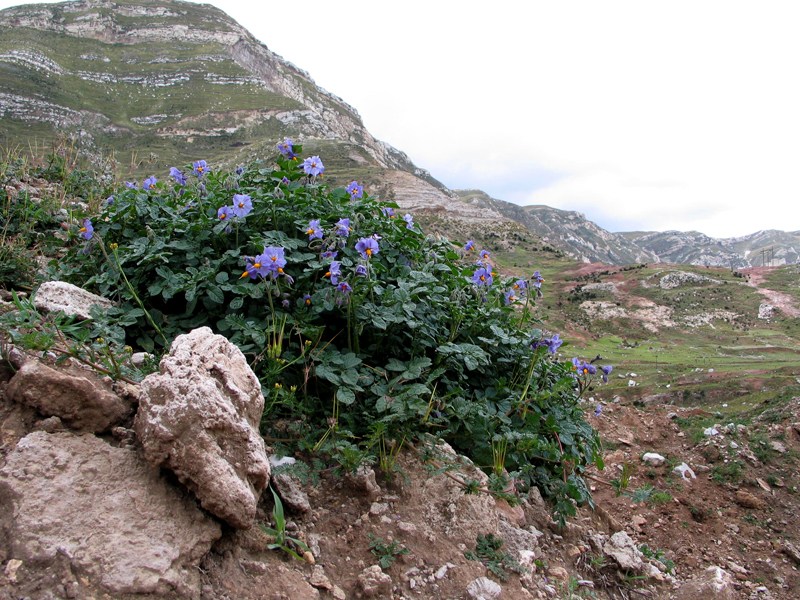
News
Traits and Genetics
What is the value of using crop wild relatives in potato breeding?
There are over 100 wild potato species and breeders have just scratched the surface for new variety development.
October 25, 2019 By Shelley Jansky, USDA-ARS and UW-Madison
 These wild potatoes grow along a hillside in the Andes. Using genetic material from crop wild relatives of potatoes can improve disease resistance, and even traits like creaminess or flavor. Provided by Shelley Jansky.
These wild potatoes grow along a hillside in the Andes. Using genetic material from crop wild relatives of potatoes can improve disease resistance, and even traits like creaminess or flavor. Provided by Shelley Jansky. It may surprise you to learn that wild potatoes grow like weeds in South America. While farmers in the United States battle weeds like pigweed and lamb’s quarters, farmers in the Andes Mountains have to keep weedy potatoes in check.
These wild relatives of our potato varieties grow in agricultural fields and roadsides, as well as in forests and grasslands. They are found in amazingly diverse habitats, from ocean beaches to windswept alpine meadows. Some even grow in the knotholes of oak trees.
As you can imagine, wild potatoes must grow in these stressful environments without the aid of fertilizer, irrigation, or pesticides. Consequently, they are rich in genes that are useful for potato improvement, especially stress tolerance.
Breeders usually refer to native, weedy versions of plants as “crop wild relatives.” Collecting and preserving this genetic diversity is crucial to today’s food supply.
In the Andes, local villagers eat potatoes daily, as part of their native diets. They have selected varieties for diverse tastes, textures, and cooking qualities. Cultivated potato relatives are also important to breeders. These land races are valuable sources of genes for culinary traits.
The U.S. Potato Gene Bank in Sturgeon Bay, Wis., maintains a large collection of wild and cultivated potatoes. My job is to find useful genes in the gene bank and bring them into cultivated potato so breeders can integrate them into their variety development programs.
My favorite wild potato, Solanum chacoense, carpets regions of the Chaco province of northern Argentina. It is one of the most broadly adapted wild potato species and has been collected extensively by scientists around the world. It carries a broad array of genes of interest to potato breeders. One clone in my program, named C545, has S. chacoense as a maternal grandparent. Another wild potato, S. berthaultii, is a paternal grandparent. C545 has resistance to several important diseases, including Verticillium wilt, potato virus Y, soft rot, common scab, and early blight.
Read more about Dr. Jansky’s work online.
Print this page